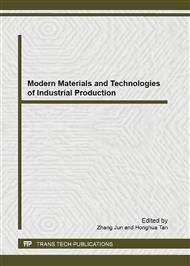p.417
p.422
p.426
p.430
p.435
p.441
p.447
p.455
p.463
Some Statistical Models vs. Models Based on SC for High Frequency Financial Time Series Applied to Bonds of Commercial Banks
Abstract:
In neural networks modeling approach, a non-linear model is estimated based on machine learning methods. The study discusses, analytically and numerically demonstrates the quality and interpretability of the obtained prediction accuracy results from prediction models based on advanced statistical methods and models based on neural networks (intelligent methods). Both proposed approaches are applied to the financial time series of s of VUB bond prices. We found that it is possible to achieve significant risk reduction in managerial decision-making by applying intelligent forecasting models based on the latest information technologies. In a comparative study is shown, that both presented modeling approaches are able to model and predict high frequency data with reasonable accuracy, but the neural network approach is more effective.
Info:
Periodical:
Pages:
435-440
Citation:
Online since:
September 2013
Authors:
Price:
Сopyright:
© 2013 Trans Tech Publications Ltd. All Rights Reserved
Share:
Citation:


